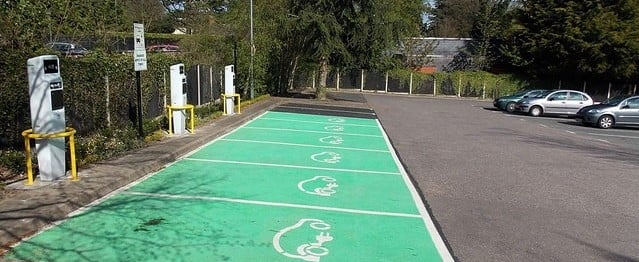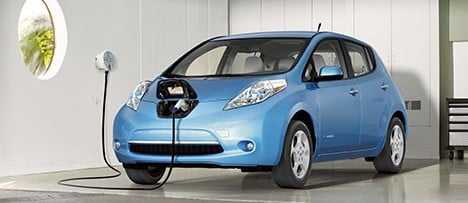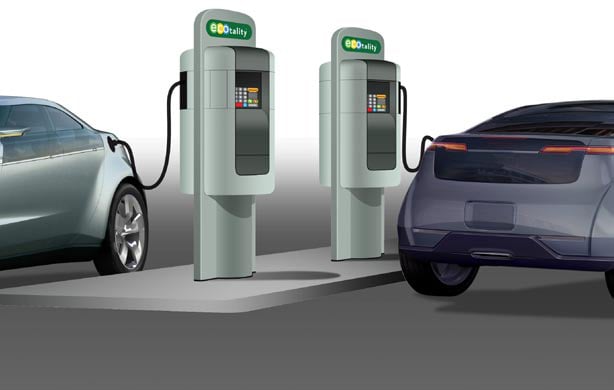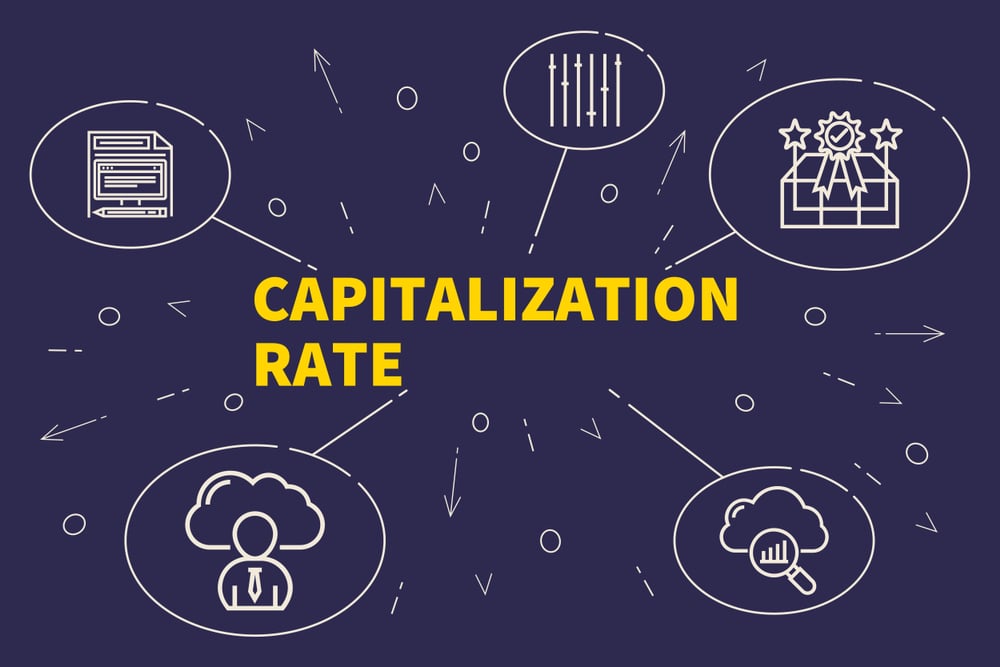EV Charging Guide for Multi-family Property Owners and Operators
 Raiven eGuide
Raiven eGuide
July, 28, 2022 - 12 MIN. READ
Electric vehicle (EV) sales are growing exponentially, and more than 80% of EV drivers prefer to charge their cars at home. So, where does that leave the 80 million Americans living in multifamily properties? Perhaps it is time for pervasive multifamily EV charging.
Executive summary
The move to EVs is here, and it's gaining momentum. Soaring gas prices and the desire to live a more sustainable lifestyle are driving more people than ever to buy an EV or seriously consider one. Automakers are getting on board and making plans to go fully electric in the near future.
But range anxiety and concern over reliable EV charging station access remain a concern for many. Home charging is the only way to go for most new and prospective EV drivers. But home charging is not as straightforward for multifamily residents. Resultingly, EV charging stations for multi-family properties represent both a challenge and an opportunity for owners and operators.
You'll need a plan to take advantage of this opportunity and provide a new and valuable amenity to your residents. This guide tells you what you need to know about multifamily EV charging solutions, including benefits, options, implementation tactics, and what to watch out for as you develop and implement your EV charging strategy.
Key considerations for multifamily EV charging
As you begin planning to implement EV charging stations for your residents, there's a lot to consider. Each of the items below are relevant to your strategy and will have a bearing on the practical and financial success of your EV charging implementation project.
- The benefits of multi-family EV charging – Implementing EV charging on your properties is not a trivial undertaking, so it's important to understand the value of adding EV chargers. Who will benefit from your charging project and how?
- EV charging options – You have some options that will impact your project's scope, effectiveness, and cost. What are the various types of charging equipment available? And what level of EV charger makes the most sense for you and your residents?
- Potential pitfalls and important questions to answer – If you are like most property owners and managers, installing EV chargers is new to you. And, like any significant upgrade or program, there are potential risks that you should be aware of and try to avoid. What should you look out for, and what pitfalls could hinder the success of your charging project?
- Achieving resident buy-in – Your project's success will hinge on your residents' acceptance and usage. How do you get the word out to your residents? What feedback should you expect as you plan your implementation?
- Financial aspects of multifamily EV chargers – The biggest holdups for many EV charging projects are financial. As a smart property owner or operator, you know that the benefits of any new initiative should be weighed against costs, and the numbers need to add up. How much will implementation cost? How should you charge your residents for charging services? What incentives are available? How will EV chargers impact your net operating income (NOI)?
The benefits of EV chargers in your properties
Perhaps the first and most important question to ask is why you should implement multifamily EV charging stations for your properties. What is the value-add for your residents, and what are the benefits for you as a multifamily owner or operator? Let’s start with the benefits for your residents.
Benefits for your residents – Multi-family residents tend to be younger and more interested in sustainable lifestyles than previous generations. Studies have shown that the 63% of drivers likely to consider buying an EV are millennials and older gen Z, and members of those generations are key demographic targets for multifamily owners and operators.
What's more, they tend to value convenience and will often pay a premium for products and services that enhance busy lifestyles. Multifamily residents gravitate toward properties that offer the amenities they want and avoid those that lack them. Studies have shown that onsite charging could make the difference in moving into or remaining in one of your properties for the vast majority of EV drivers.
Benefits for you and your properties – EV charging in your properties can be a competitive advantage and will only intensify as more of your residents switch to EVs. That is just the beginning of the value-add you can expect.
EV charging has the potential to generate an entirely new source of revenue for your portfolio properties. Depending on your charging scheme and the usage level in your properties, this added revenue could be substantial. Remember that, as the EV wave accelerates, your EV charging revenue will increase.
Onsite charging at your properties also promotes an eco-friendly and green community. It shows that you and your properties support more sustainable lifestyles, helping your brand in the surrounding community. And it could potentially generate positive word of mouth, social media mentions, and web reviews.
You know that the competition for residents can be fierce and that offering unique amenities gives you a leg up with new and prospective tenants. EV charging is a cutting-edge amenity now that will help attract and retain residents. As EVs become more prevalent, onsite EV charging may well become an expected amenity. In other words, it may become almost a competitive necessity.
An additional benefit is the potential for increasing your property values. It's easy to see why. A property with happy and loyal residents, an innovative and green reputation in the community, and an established EV charging infrastructure on the balance sheet would likely result in a higher market valuation.
EV charging options
The 3 levels of EV chargers vary according to charging speed, implementation requirements, and cost. Level 3 chargers can cost up to $50,000 a piece, so, while they are blazingly fast, they are too expensive to be a viable option for most multi-family properties. That leaves Levels 1 and 2 as your EV charging options. Here are the pros and cons of each:
- Level 1 – Level 1 chargers are comparable to the power cord for a laptop computer in that they can be plugged into any standard 120-volt outlet. Virtually all EVs come with one. While Level 1s are inexpensive and impose minimal electrical requirements, they are excruciatingly slow, delivering only about 3 to 5 miles of range per charging hour. Level 1s are primarily useful in an emergency when access to a faster solution is unavailable.
- Level 2 – Level 2s are the option of choice for most drivers, striking the optimal balance of charging speed, cost, and electrical service requirements. They can charge a battery to the optimal capacity level overnight but do require access to upgraded 240-volt service and cost more than Level 1 chargers. Many are considered "smart" chargers due to their networking, payment, and management capabilities.
As the clear choice for most multifamily properties, Level 2 charging stations have tangible advantages in speed, cost, and implementation requirements. And your residents should find them to be a good fit for their EV charging needs, allowing them to fully charge at home overnight.
It should be noted, however, that, because Level 2 chargers typically require upgrades to a property's existing electrical infrastructure, implementation costs vary widely. Depending on the age of the building, the capacity of existing electrical panels and other infrastructure, the number of chargers installed, and even the level of service in the local neighborhood, the upgrades required could be substantial. It's recommended that you enlist the help of a professional electrical contractor early in your planning process to get a full picture of the work required and what it will cost to upgrade.
Potential risks, pitfalls, and essential questions
While a carefully planned and well-executed implementation should alleviate most pitfalls and risks, there will be a few items that you should be ready to handle should they crop up. There are also some important questions that should be answered early on in your planning, as they will significantly impact your project strategy.
Risks and pitfalls
- Safety precautions – EV chargers are generally safe to use, but, like all electrical equipment, they can be dangerous. Caution should be observed, and proper safeguards put in place to minimize the chances of accidents. For instance, if the units are outdoors, they must be weatherproof. All equipment must be installed and maintained according to code. And only trust qualified electrical contractors to handle the installation and any subsequent upgrades or maintenance.
- Theft and vandalism prevention – Charging units should be in areas that can be easily monitored via security cameras to prevent stolen or damaged charging stations.
- Resident dispute avoidance and resolution – As more residents acquire EVs and want to use them during peak hours, residents may not always agree on who gets to use a charger and when. For that reason, it's recommended that you implement an equitable reservation system to manage resident access to chargers.
Essential questions
- What electrical infrastructure upgrades are needed to support EV chargers? – Especially for older buildings, this fundamental question impacts the entire initiative. Upgrade costs may be substantial if the existing service is in poor shape or simply inadequate to support EV chargers.
- How many new electrical circuits will you need to add? – When assessing the existing infrastructure, you'll need to determine how many new circuits will be needed to support EV charging stations.
- What permits and licenses are needed? – Prior to any work commencing, proper permits and licenses will need to be in place.
- What is needed to ensure building code compliance? – Electrification has spurred updates to many building codes, so new research may be required to ensure compliance.
- Where will the chargers be located? – The location of the chargers, be it in a parking structure, outdoors, or wherever, may affect costs and usage levels.
- Will the chargers be dedicated or shared? – In most instances, chargers are shared, and protocols help maximize usage while minimizing conflicts.
- What rules of engagement should be adopted? – Related to the proceeding question, how should resident usage be governed, including reservation procedures, assigned timeslots, and the like?
- What management features are needed? – Management features such as booking reservations, online tracking of charger availability, waiting lists, alerts, and status updates can make it easier to implement and share the rules of engagement.
Achieving resident buy-in
An often-overlooked aspect of implementing EV charging stations for multifamily properties is the introduction of the units to your residents. If your residents know how to use the new EV charging stations, they will likely buy in and use them. The success of your initiative and the intended resident satisfaction depends largely on promotion and engagement, including:
- Advertise the new amenity to residents – Make sure your residents know that EV chargers are now available and how to use them.
- Give live demos and distribute how-to documentation – Invite your residents to demo events where they can see EV charging in action. Follow up with well-designed, attractive documentation to provide more detail.
- Establish etiquette protocols, pricing, and ground rules – Support these important concepts and processes with group presentations and handouts.
- Incorporate charging rules and protocols into lease agreements – Make the new rules surrounding EV chargers official by integrating relevant verbiage into resident leases.
Financial aspects of multifamily EV chargers
While the benefits of EV chargers in your properties should be clear, no charging strategy would be complete without an in-depth analysis of their financial implications. Important financial implications of EV chargers include costs, payment methods, and incentives.
Installation costs
Perhaps your implementation initiative's most impactful financial implication is EV charger installation costs. Several factors contribute to the total installation cost, including the degree and type of electrical infrastructure upgrades required, the number and locations of installed chargers, and the cost of the installed units. Due to the variances between properties, it is impossible to project a "one-size-fits-all" estimate of what your costs will be, but these general component costs will give you some guidelines:
- Charger equipment and basic installation costs – We are assuming that Level 2 chargers will be used for the reasons given above, and we are citing ballpark costs for single units. As you will almost certainly buy in multiples, you can expect volume discounts that escalate as quantities increase. For a typical Level 2 charger, you can expect to pay between $500 and $1,000 for a single charger unit, and installation labor will add $1,200 to $4,000.
- Infrastructure costs – Upgrades to electrical infrastructure can vary widely due to such factors as the age and configuration of the building, whether the chargers will be hardwired or plugged into 240-volt outlets, and the capacity of the electrical panel. In addition, where the chargers will be located in relation to the electrical panel will have a measurable impact on costs. Some example upgrade costs include $1,800 to $2,500 for a 200-amp panel, $8 per foot for dedicated 50-amp wiring, and $300 to $800 for a 240-volt 50-amp outlet.
- Maintenance and repair costs – Once implementation is complete, you should budget funds to maintain the charging units and repair them if necessary. You may even want to keep a spare replacement charger or 2 on hand in the event of a breakdown.
It is recommended that you complete an assessment of your electrical panel, wiring, outlets, and other existing infrastructure as early in the planning process as possible since upgrade costs are the biggest wildcard in the entire project.
Payment methods
Pricing and payment mechanisms are important components of your EV charger strategy. While you may offer the service as a free amenity, you may decide to charge your residents for usage instead.
Charging fees can cover the installation and maintenance costs or be booked as an additional revenue stream depending on your preferences. Whatever you decide, it is important to integrate any projected revenue into your overall strategy and into your net operating income (NOI) calculations.
Should you decide to charge fees, you have some options, including:
- A rental surcharge – You could simply add a fee to your monthly rents. Costs would be spread across your entire resident population regardless of the level of charger usage.
- Subscription fees – Only those residents that use the service would pay a monthly fee.
- Pay-for-service charges – Similar to "pay at the pump" at a gas station, residents would pay only when they charge up their vehicles by swiping a card or using a phone app if your system is so enabled.
Within these options, you can get even more granular on pricing. For instance, you could charge for access, for the amount of electricity used, or both. The level of granularity may depend on the data-tracking capabilities of the equipment you install.
Incentives and cost offsets
As the EV movement progresses, many governmental organizations, utility companies, and even equipment manufacturers have stepped up with multifamily EV charging incentives to promote the development of charging infrastructure. Though many of these are localized and specific to a particular area, they are increasingly common. With a little research, you are likely to find offsets for your properties regardless of where they are located.
It pays to research, as these incentives can add up and significantly reduce your procurement and installation costs. One great resource to consult is the Alternative Fuels Data Center website run by the US Department of Energy. Here are some examples of incentive programs that can help offset the cost of EV chargers in your properties:
Electric utility credits and incentives – Over 3,200 local electric utilities offer incentives to their customers, including property owners, to encourage the build-out of EV charging stations for multifamily buildings. Details vary, but incentives include credits and rebates and may cover equipment purchases, installation costs, or a combination.
Federal incentives – The federal government sponsors several programs that help cover the cost of multifamily EV charging stations.
- Alternative fuel vehicle refueling property tax credit – This program provides significant tax credits for commercial buildings, including multifamily properties. The credit varies from project to project but could amount to 30% of EV charging equipment and installation costs.
- Community alternative fuel infrastructure grants – Unlike tax credits, this incentive program provides direct grant payments to fund EV charger installations in multifamily buildings.
- Improved energy technology loans – This program provides loan guarantees of up to 100% for EV charging infrastructure through the US Department of Energy.
- HUD incentives for EV charger installations – The US Department of Housing and Urban Development offers a range of financing programs for multifamily EV charger infrastructure.
State incentives – Many states offer incentive programs, so you should check what is available in your home state. A search of the US DoE's Alternative Fuel Data Center lists more than 60 state-run incentive programs across the US. A couple of examples include:
- Low carbon fuel credits (LCFC) – California and several other states offer LCFCs to help offset the cost of EV charger installations. For multifamily properties with multiple charging stations, LCFCs can add up quickly to help defray your costs. Many states and provinces across the US and Canada are in the process of adopting LCFC programs.
- California incentives – California has 16 multifamily EV charger incentive programs listed with the US DoE Alternative Fuels Data Center site, including grants, rebates, and tax credits.
Conclusions
Multi-family EV charging stations represent a unique opportunity for property owners and operators. But careful planning, detailed research, and a comprehensive strategy are required to make your EV charger initiative a success.
You will have to make some key decisions on what chargers to install, where and how to set them up, and how you will allocate usage and charge for it. Special attention should be paid to costs and incentives to ensure the financial viability of your project. You may also want to enlist experts in electrical installation and equipment procurement to increase efficiency and safety while minimizing costs.
With a well-conceived strategy and the help of the right tools and partners, you can expect to boost resident satisfaction and loyalty, increase property values and NOI, and even add a new revenue stream.
Raiven has powerful tools for multifamily owners
Raiven serves multifamily properties and property owners by providing the lowest prices on equipment, parts, and maintenance supplies as well as a purchasing platform that makes buying fast and efficient. Key benefits include:
- Pre-negotiated discounts of 7-25%+ from big name suppliers like Ferguson, HD Supply, Grainger, Graybar, Office Depot, and more.
- Supply chain alerts for price and product availability changes on the items that matter to you most.
- Private marketplace houses all your preferred suppliers in one location for easy access to your discounts. No more bouncing around websites comparing prices.
- AI-powered purchasing tools that find the lowest prices even when employees shop outside your network.
Raiven is your one stop to save time and money. Ask our clients Core Realty, Lyon Living, or Oaks Property Management what we’ve done for them. Visit Raiven to learn what we can do for you.
If you need your EV charging stations installed, be sure to visit Qmerit, the nationwide leader in electrification solutions.


